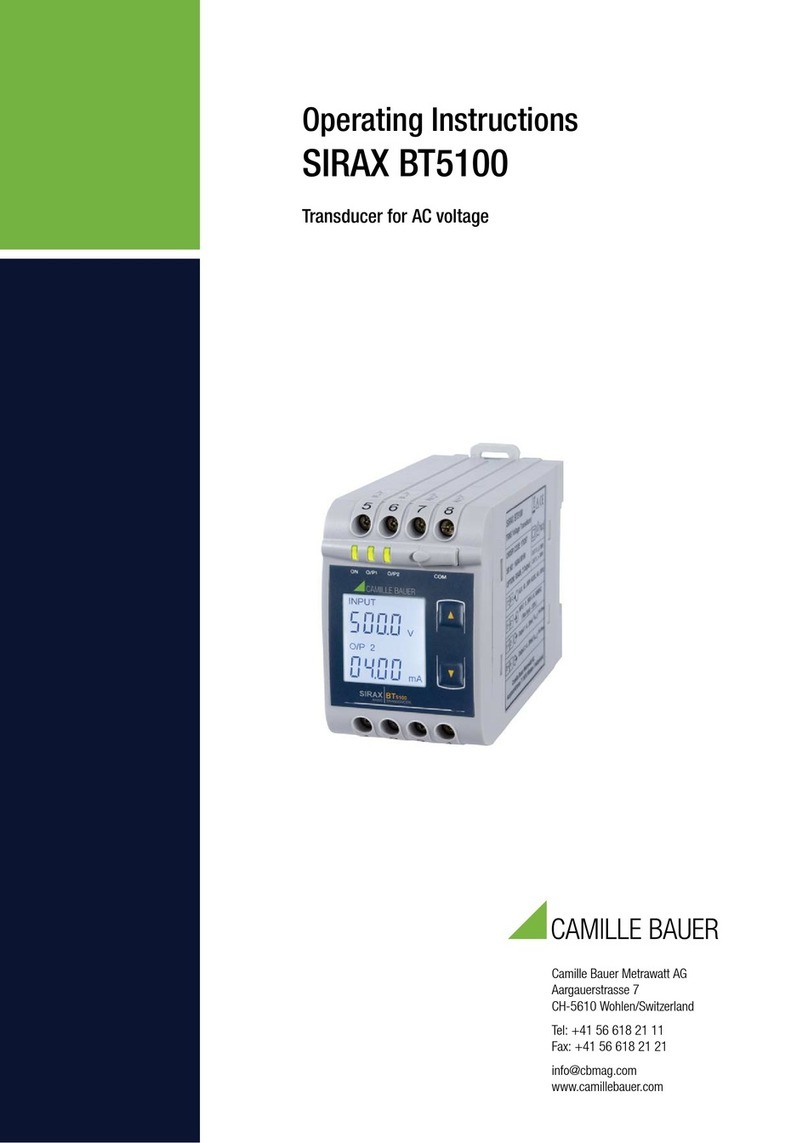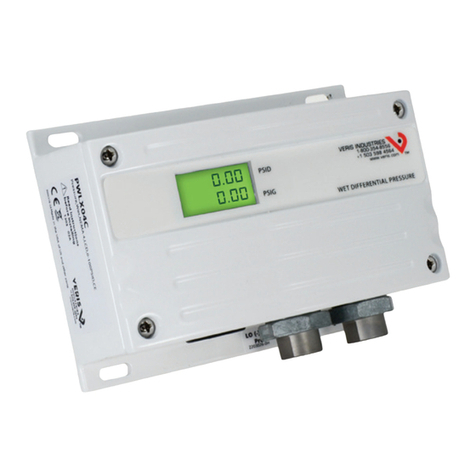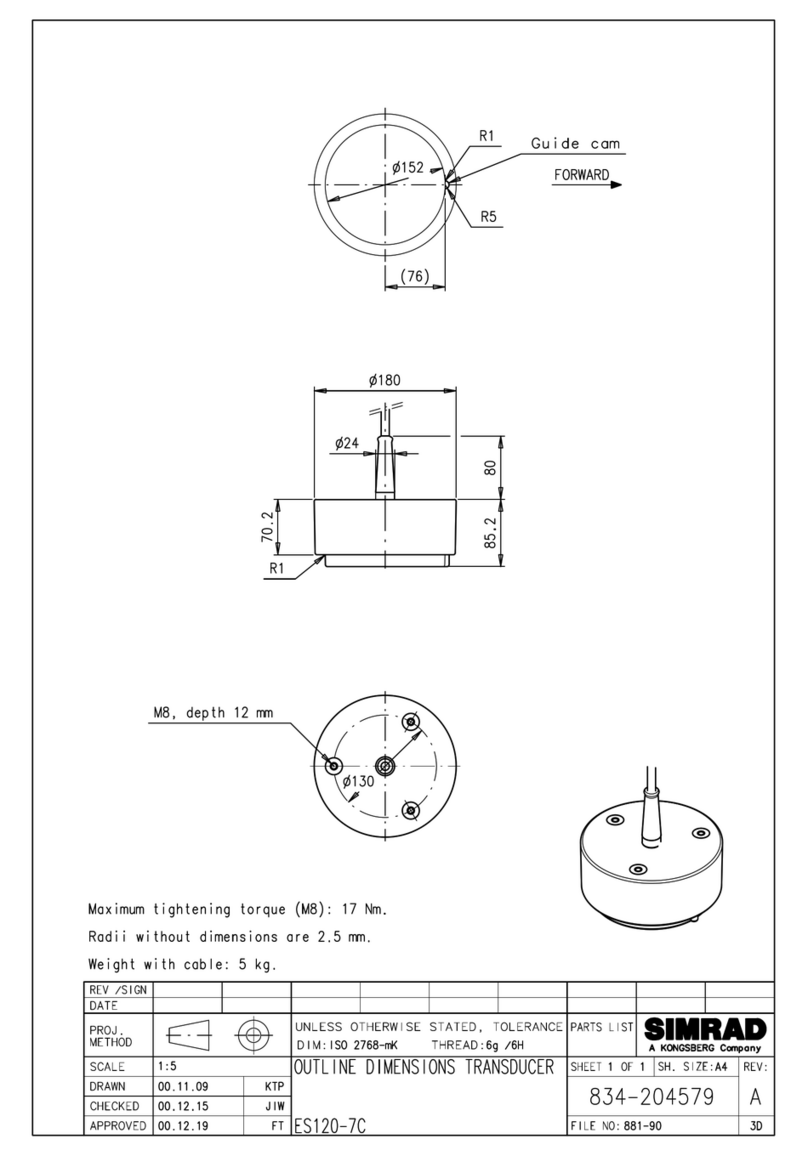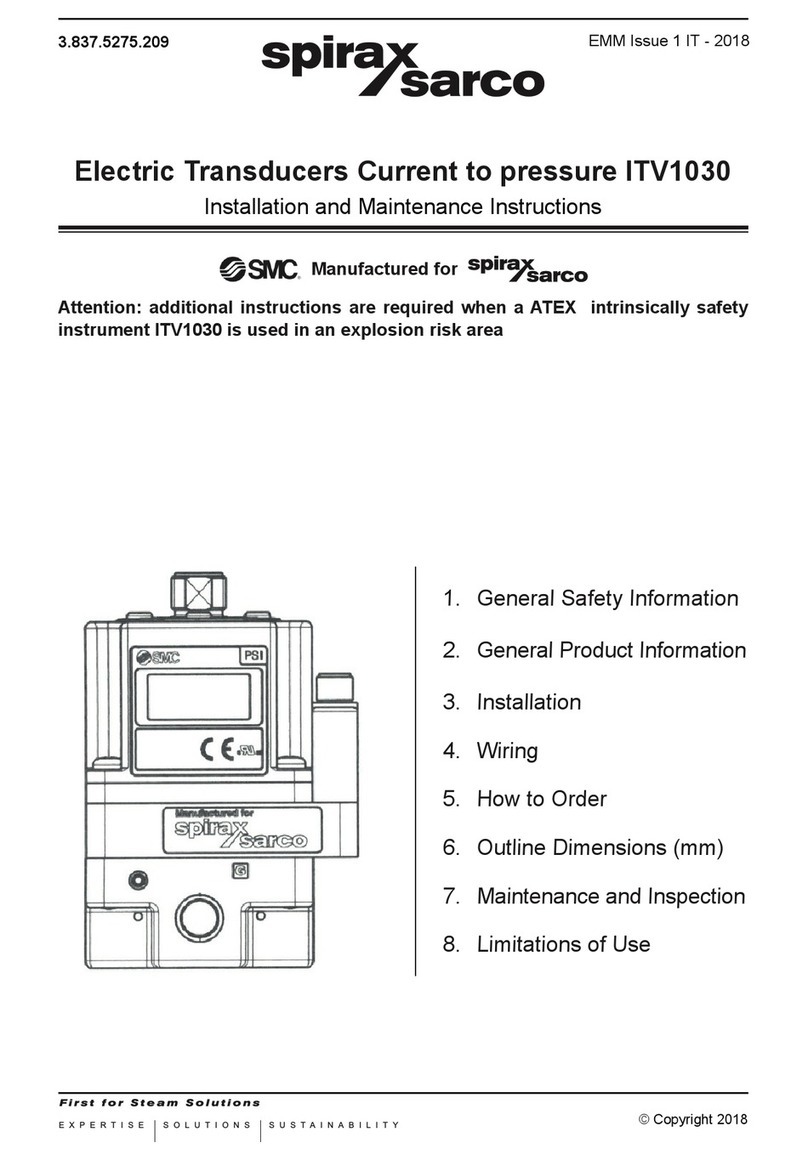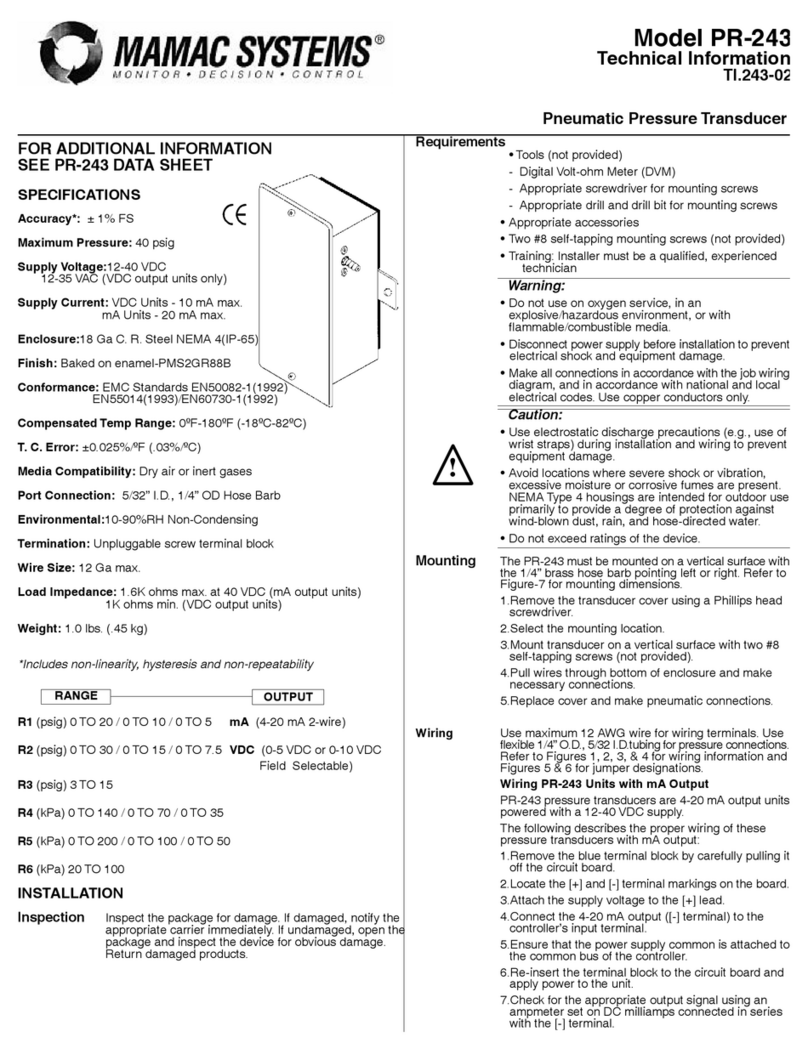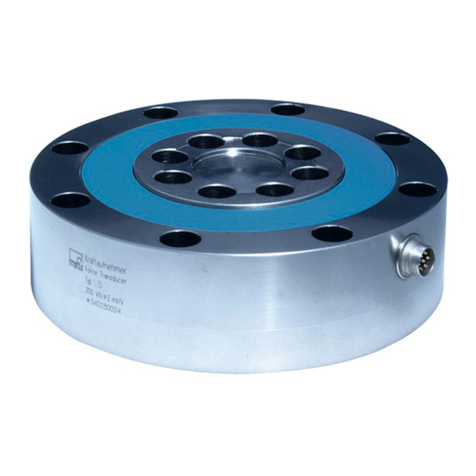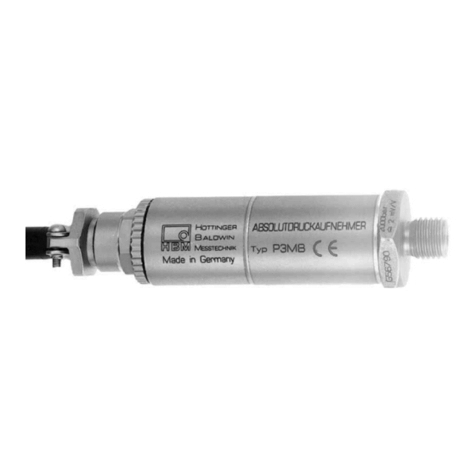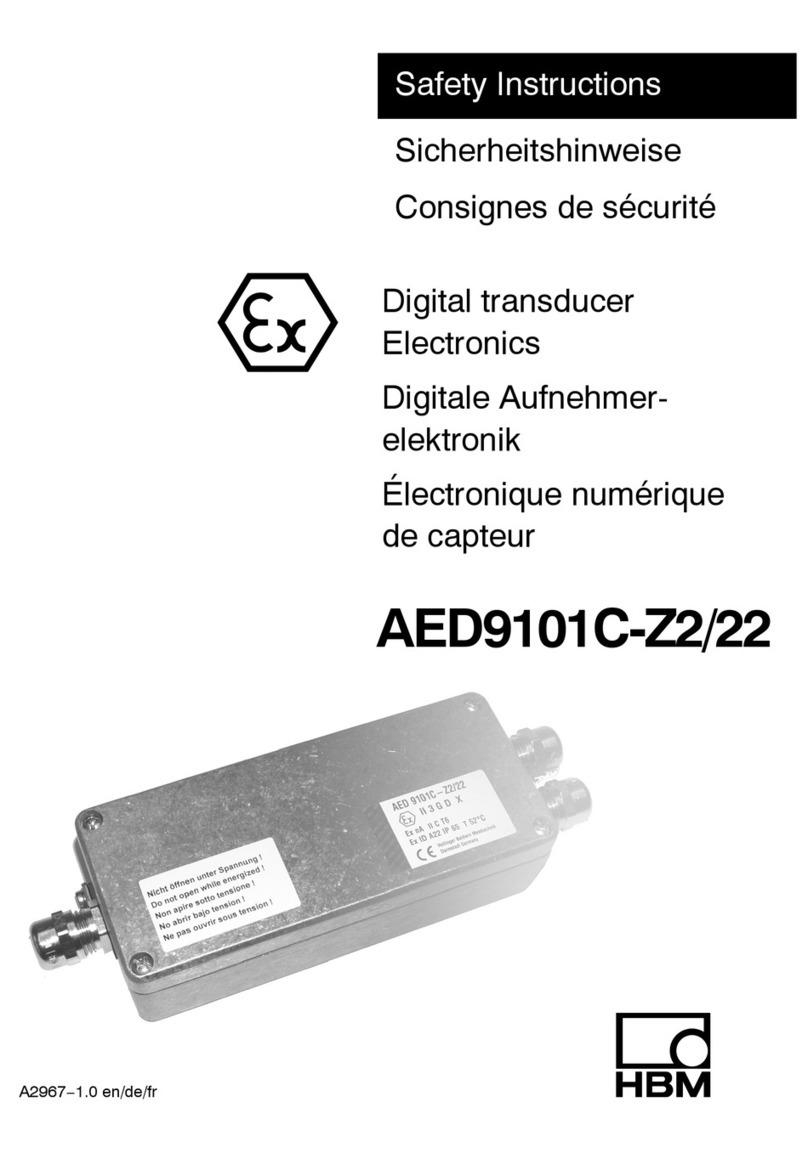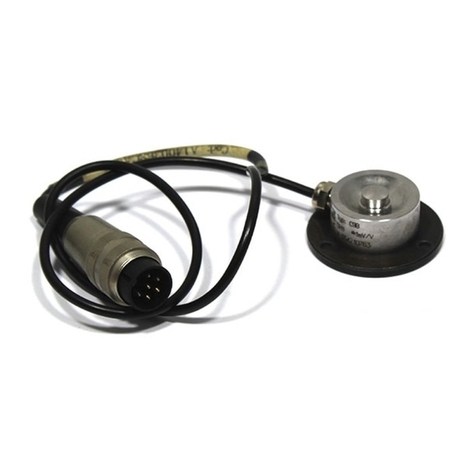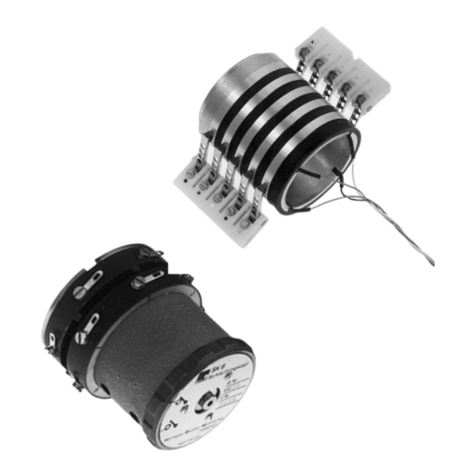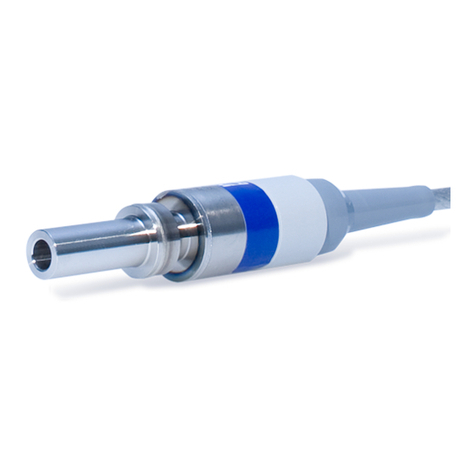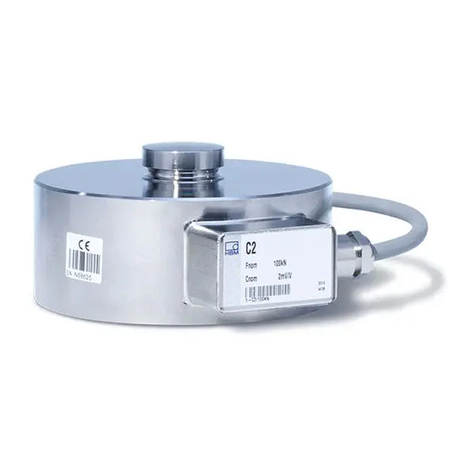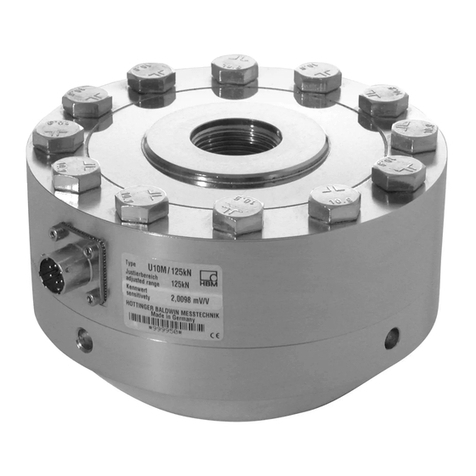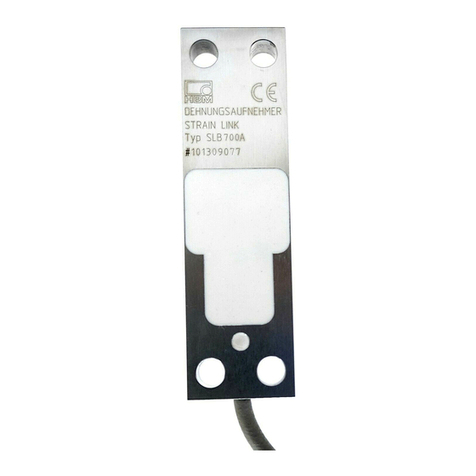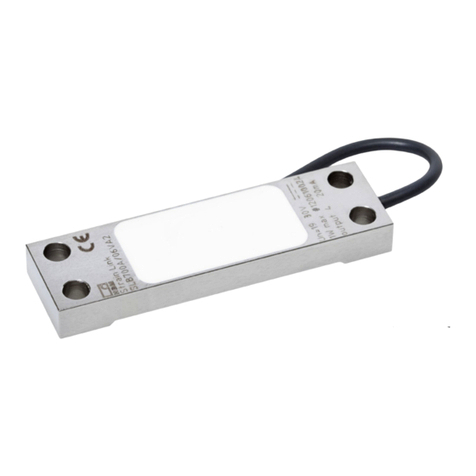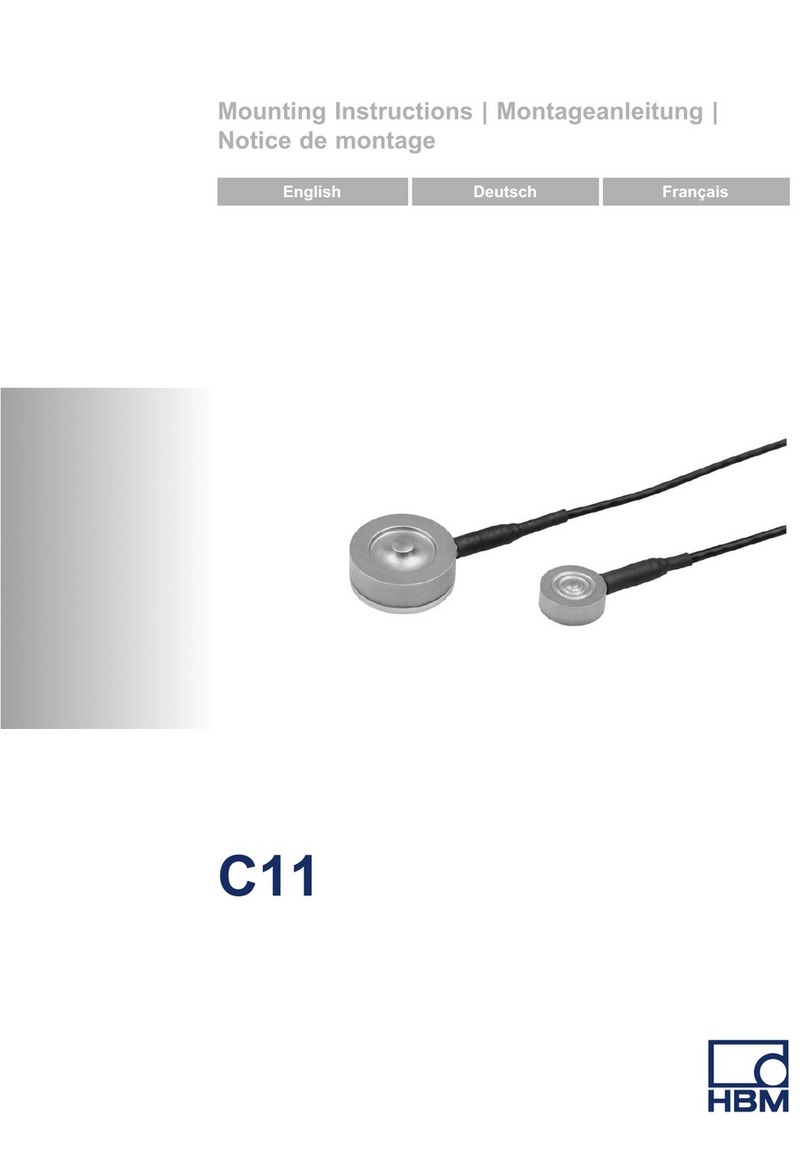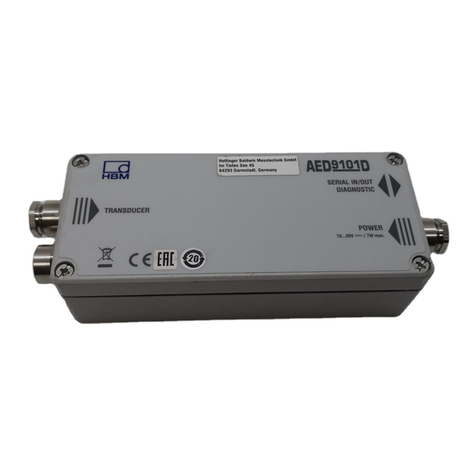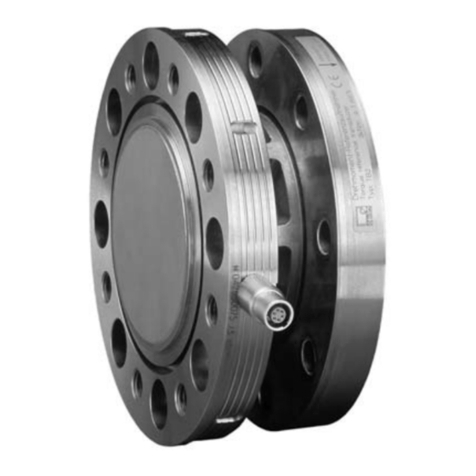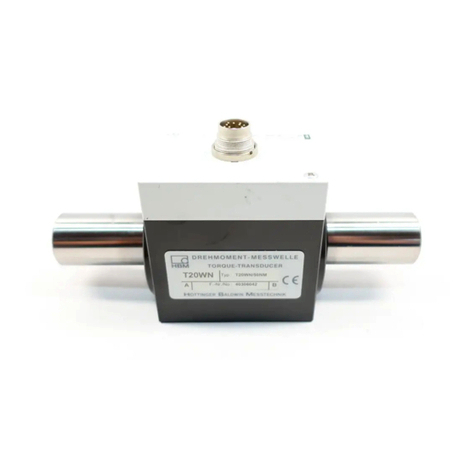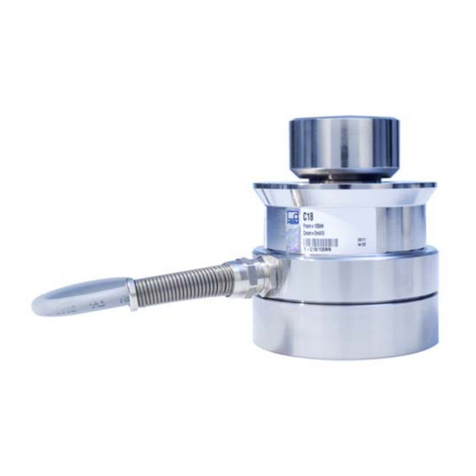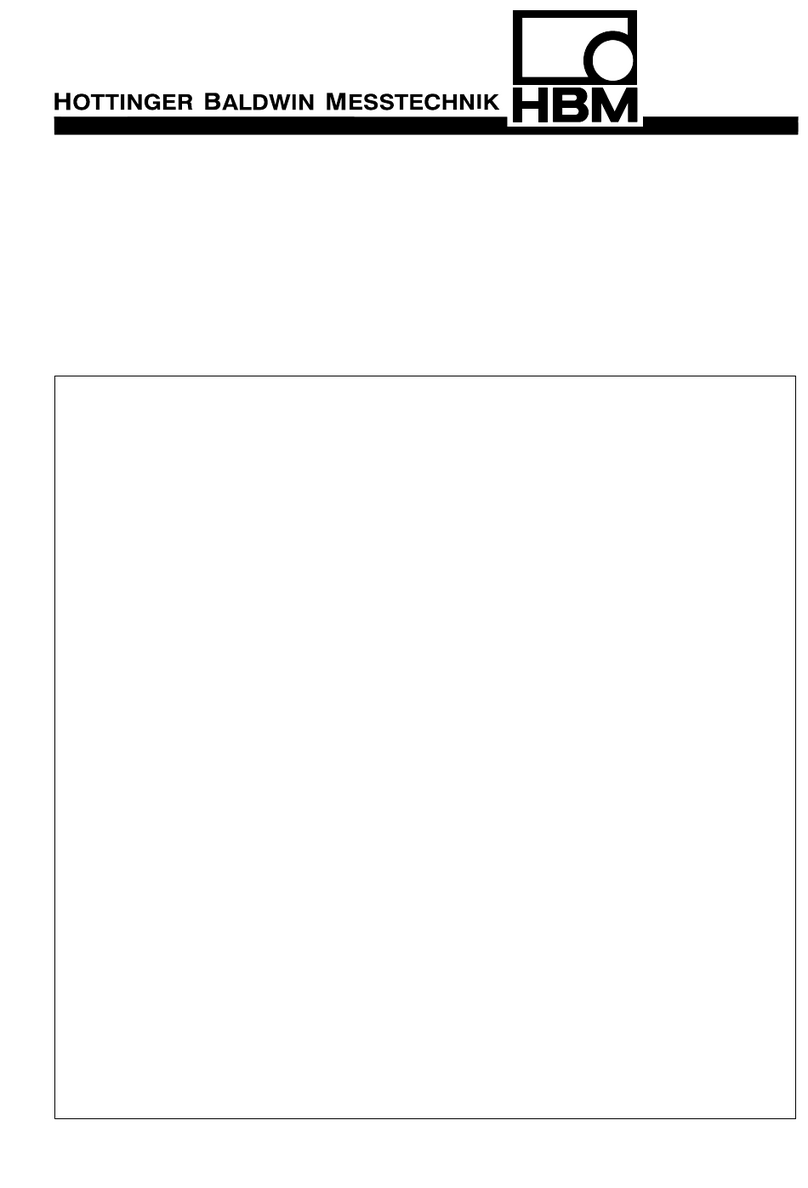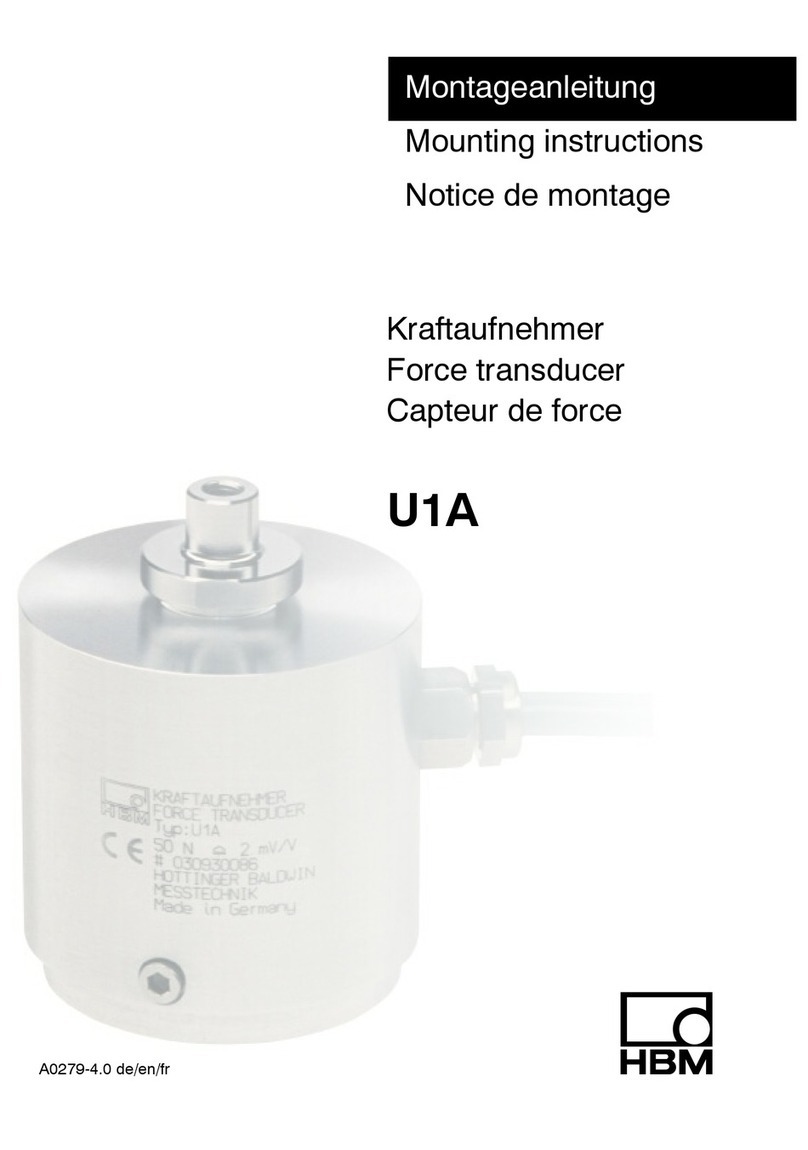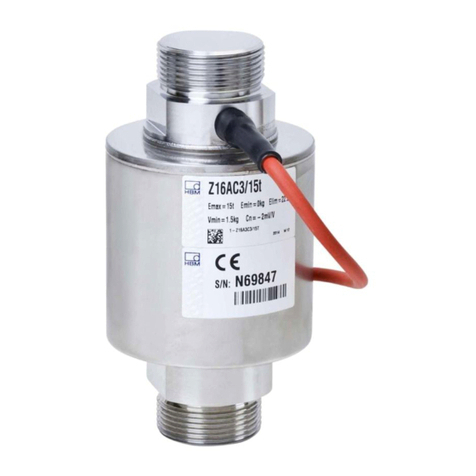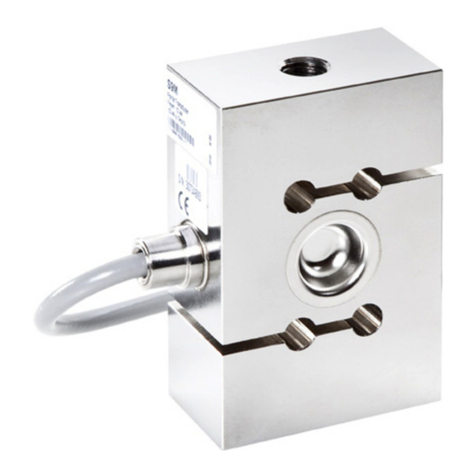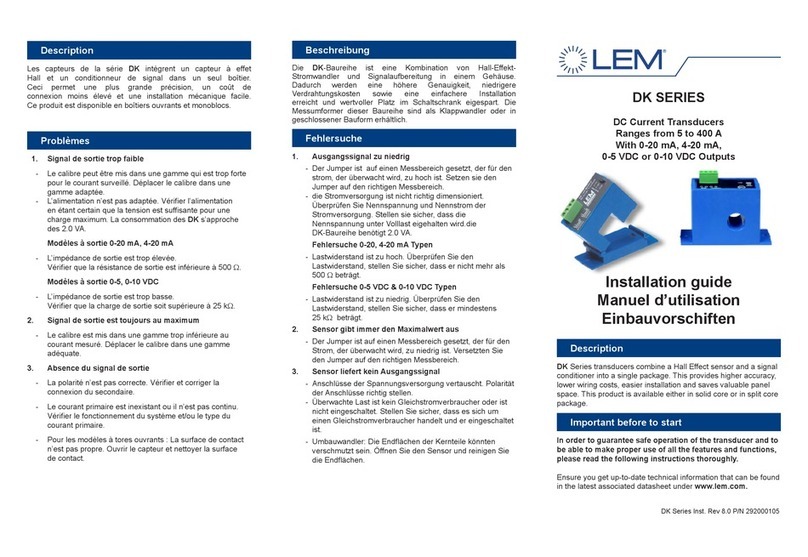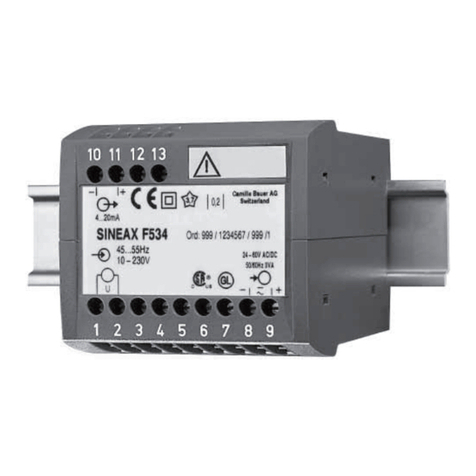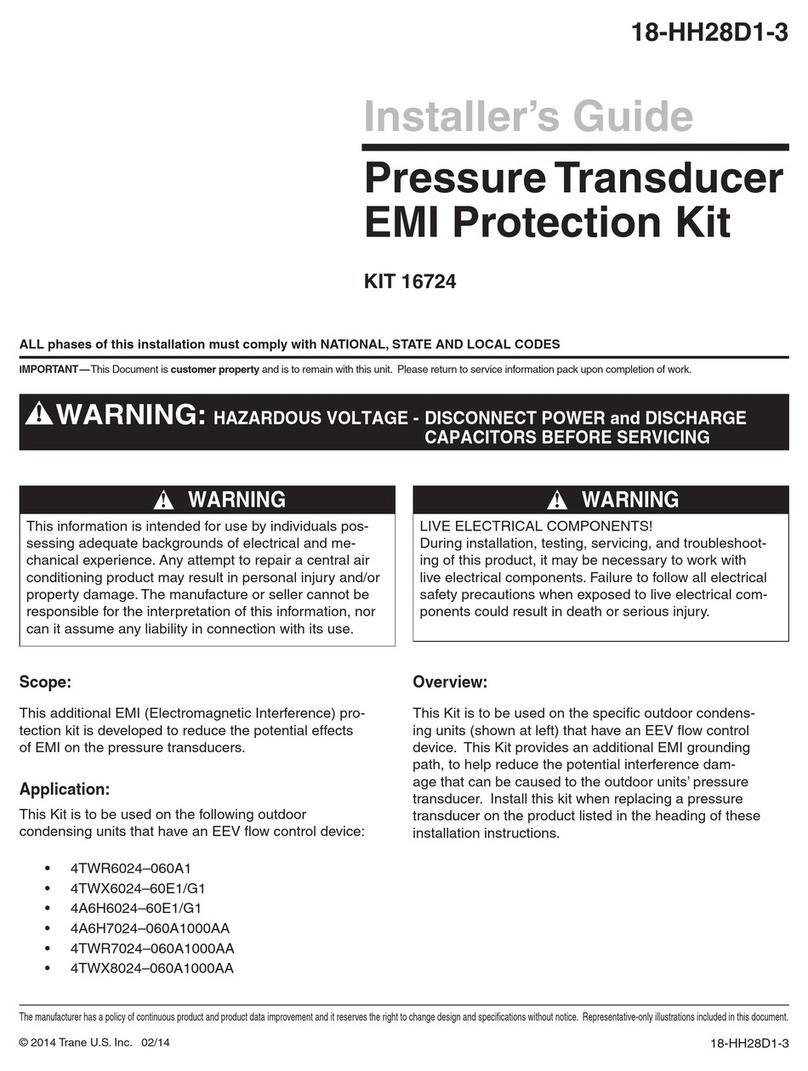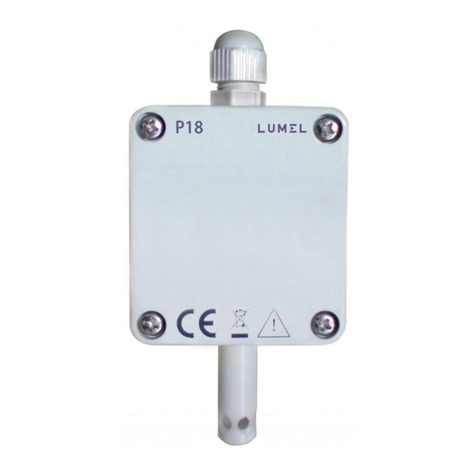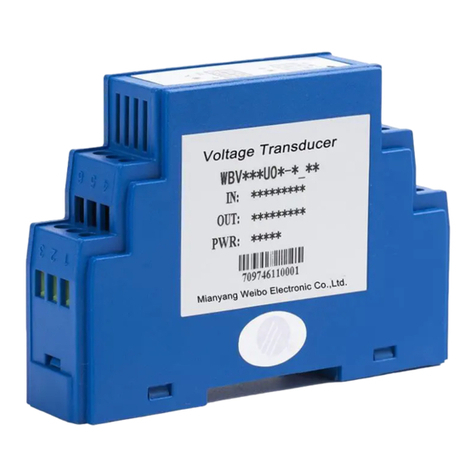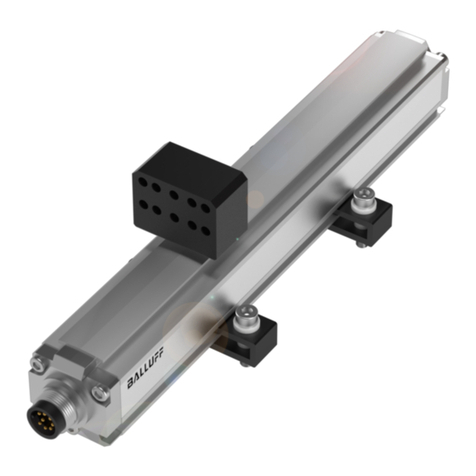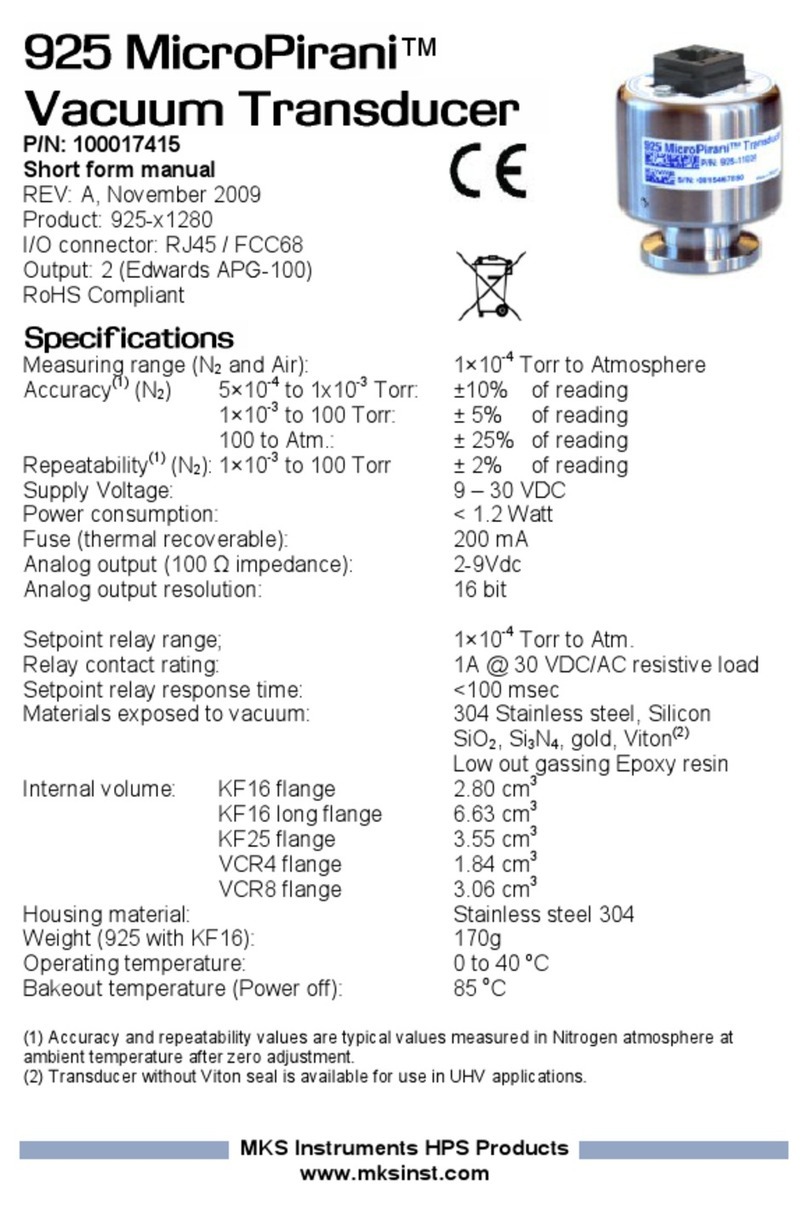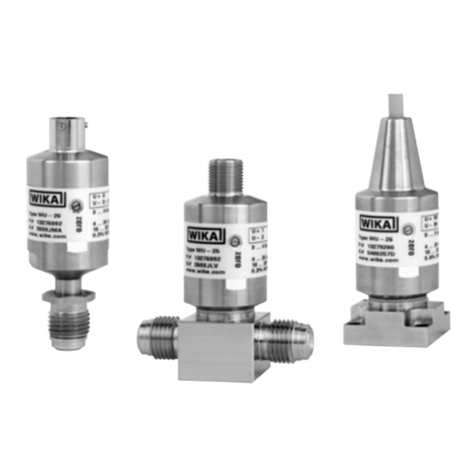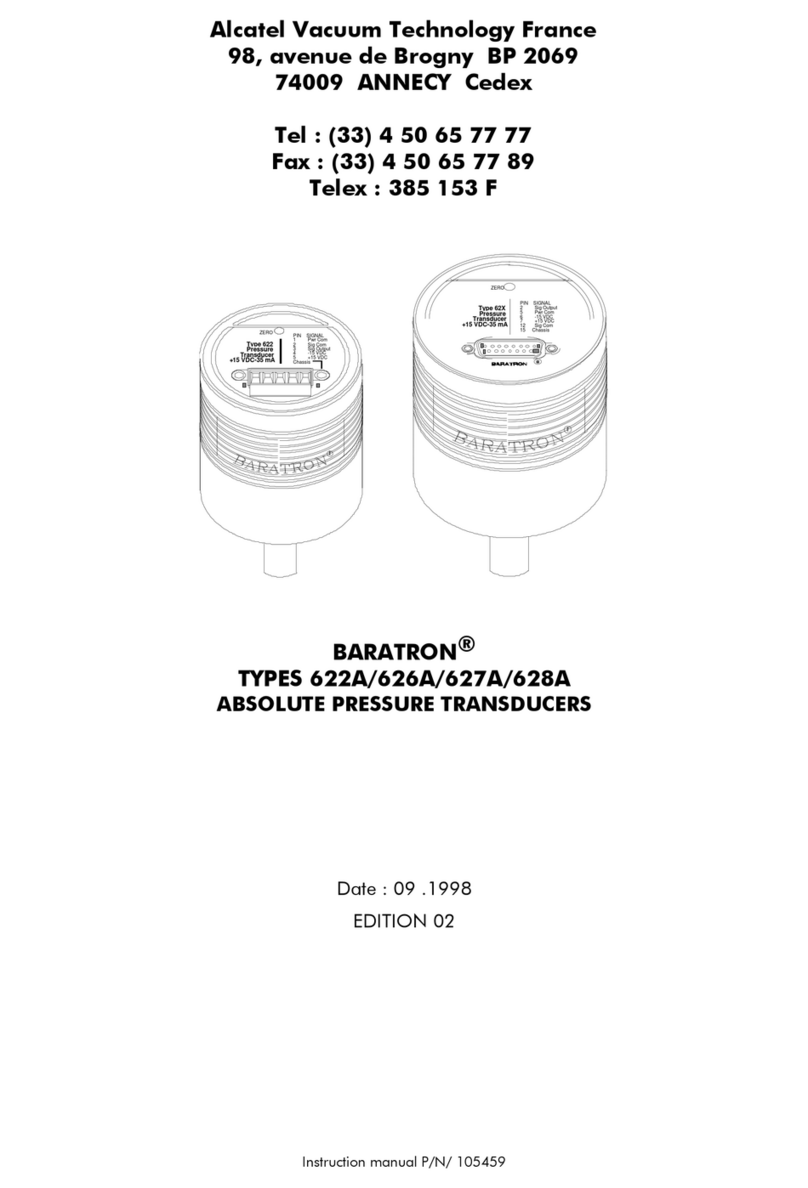
4TOPTRANS
B 20.TOPTRANS.10 en
HBM
Safety instructions
Use in accordance with the regulations
Force transducers of TOP Transfer types: TOP–Z30 and TOP–Z4A are used
to make comparative force measurements (force transfer). Use for any
additional purpose shall be deemed to be not in accordance with the
regulations.
In the interests of safety, the transducer should only be operated as described
in the Mounting Instructions. It is also essential to observe the appropriate
legal and safety regulations for the application concerned during use. The
same applies to the use of accessories.
The transducer is not a safety element within the meaning of its use as
intended. Proper and safe operation of this transducer requires proper
transportation, correct storage, assembly and mounting and careful operation
and maintenance.
General dangers due to non-observance of the safety instructions
The TOP–Z30 and TOP–Z4A force transducer correspond to the state of the
art and is fail-safe. The transducers can give rise to residual dangers if they
are inappropriately installed and operated by untrained personnel.
Everyone involved with the installation, commissioning, maintenance or repair
of a force transducer must have read and understood the Mounting
Instructions and in particular the technical safety instructions.
Residual dangers
The scope of supply and performance of the transducer covers only a small
area of force measurement technique. In addition, equipment planners,
installers and operators should plan, implement and respond to the safety
engineering considerations of force measurement technique in such a way as
to minimize remaining dangers. Prevailing regulations must be complied with
at all times. There must be reference to the remaining dangers connected with
force measurement technique.

